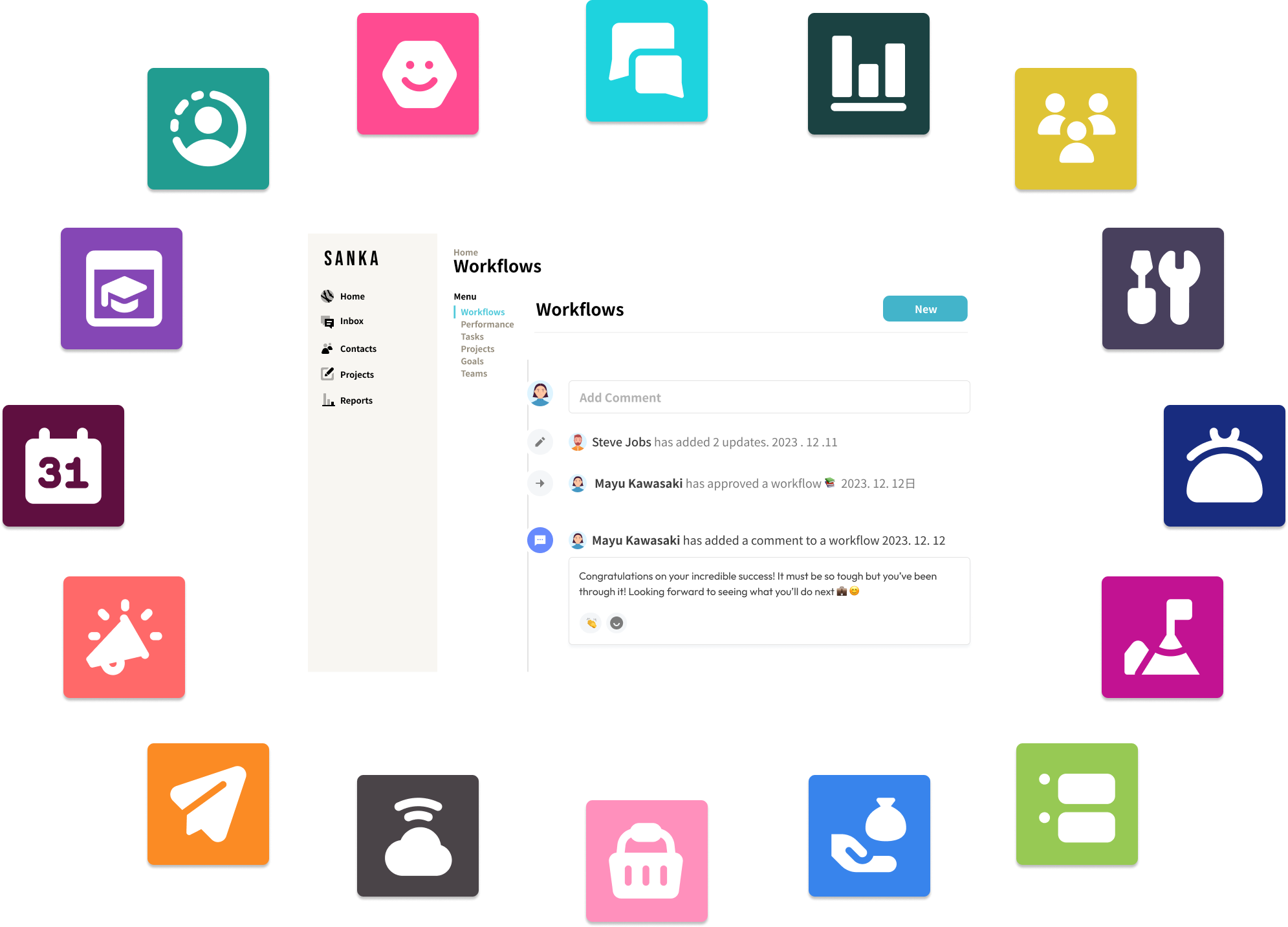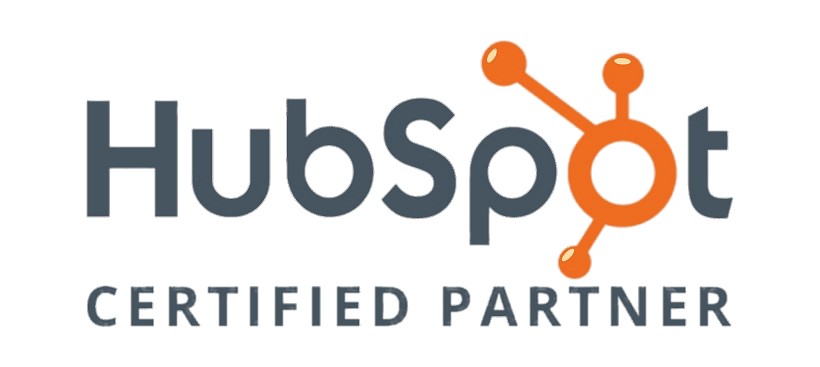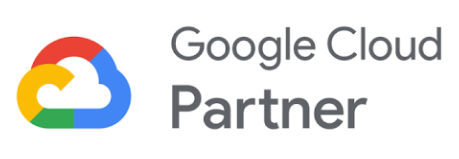Introduction
For business managers navigating the intricate web of online transactions, the use of cutting-edge Order Management Software (OMS) is not just a convenience but a strategic necessity.
This article is going to cover how you can master e-commerce efficiency through the power of order management software.
As online retail continues to soar, business managers find themselves in a relentless pursuit of efficiency, seeking tools that streamline their operations and enhance customer satisfaction.
So, what is Order Management Software?
Order Management Software (OMS) is a comprehensive solution that handles the entire order-processing workflow.
It consolidates and automates various tasks, including order capture, inventory management, order fulfillment, and customer communication.
This not only reduces the workload on your team but also minimizes the chances of errors that could tarnish your brand’s reputation.
OMS tracks inventory levels in real-time across multiple warehouses, optimizing stock levels to prevent stockouts or overstock situations.
It also facilitates order fulfillment by automatically routing orders to the nearest warehouse and generating packing slips and shipping labels.
Additionally, OMS provides visibility into order status and integrates with other software systems for seamless operations.
Overall, OMS enhances efficiency, improves customer service, and supports business growth in the competitive e-commerce market.
Below we have listed the top 10 e-commerce software platforms that you can use to scale your business.
How to Choose the Right Order Management Software for E-commerce
Order Management Software (OMS) plays a pivotal role in streamlining this process, providing businesses with a cohesive platform to oversee the lifecycle of an order.
However, with a plethora of options on the market, choosing the right OMS for your e-commerce business can be daunting.
Here's a comprehensive guide to navigating this selection process, aiming to make it both informative and accessible for beginners.
Key Features to Look For
When selecting an OMS, there are several key features to consider:
1. Integration Capabilities
Your OMS should seamlessly integrate with other systems you’re using, such as your Customer Relationship Management (CRM) software, accounting software, and any platforms you sell on.
This ensures smooth synchronization of data across systems.
If you sell on Shopify and also in a physical store, your OMS should automatically update inventory levels across both platforms whenever a sale is made, preventing overselling.
2. Scalability
Choose an OMS that can grow with your business. It should be able to handle an increasing number of orders and support expansion into new channels or markets without significant upgrades.
A small business might start with processing 100 orders a month but could grow to handle 10,000. The OMS should accommodate this growth without requiring a system overhaul.
3. Inventory Management
Effective inventory management is vital to prevent stockouts or overstock situations. Look for an OMS that offers real-time inventory tracking, low-stock alerts, and even predictive restocking features.
Select an OMS which could alert you when a popular item is running low and even automatically reorder stock based on past sales trends.
4. Customer Service Tools
An often-overlooked feature of OMS is its capacity to enhance customer service.
The system should be able to provide customer representatives with comprehensive order and customer history.
This is crucial for efficiently resolving any issues or inquiries.
A customer inquiring about a delayed order can be quickly assisted if the representative has immediate access to the order’s shipping status and history.
5. Reporting and Analytics
A good OMS provides detailed reports and analytics that can help you make informed decisions.
This includes sales trends, order fulfillment times, inventory levels, and more.
Analytics can show that a particular product sells well in the summer months, helping you prepare your stock and marketing strategies accordingly.
6. Ease of Use
The software should have an intuitive interface that your team can easily adopt. Complex systems can lead to a steep learning curve and errors.
A user-friendly OMS would allow new staff to quickly learn how to process returns without extensive training.
Practical Steps to Choosing an OMS
1. Assess Your Needs
List down the specific needs of your e-commerce business, including your sales channels, inventory size, fulfillment methods, and any unique requirements you have.
2. Research and Create a Shortlist
Based on your needs, research available OMS solutions and create a shortlist of options that closely match your criteria.
3. Request Demos and Trials
Most vendors offer demos or free trials. Use these to test each system on your shortlist within your own business context. Pay attention to the features listed above and how intuitively your team can use the software.
4. Consider Costs
Evaluate the cost against your budget. Remember, the cheapest option may not always be the best value if it doesn’t meet all your needs. Consider both upfront costs and any recurring fees.
5. Check Reviews and References
Look for reviews from current users, especially those in a similar industry or business size. You can also ask for references from the software providers.
6. Evaluate Support and Training
Ensure the vendor offers comprehensive support and training to help your team get the most out of the software.
Top E-commerce Software Platforms
Shopify
- Facilitates transactions totaling over $200 billion.
- Offers a vast app ecosystem for extending functionality.
- Provides 24/7 customer support for users globally.
- Allows seamless integration with various payment gateways.
- Supports multiple sales channels, including social media and marketplaces.
Magento
- Handles over $155 billion in transactions annually.
- Boasts a global community of over 300,000 developers.
- Provides advanced analytics and marketing tools.
- Offers a marketplace with a wide range of extensions.
- Supports B2B e-commerce with dedicated features.
WooCommerce
- Powers approximately 30% of all online stores.
- Over 90 million downloads showcase its popularity.
- Supports both physical and digital products.
- Allows customization through a variety of plugins.
- Integrates seamlessly with popular payment gateways.
BigCommerce
- Powers over 60,000 online stores globally.
- Total gross merchandise volume exceeds $25 billion.
- Supports headless commerce for a decoupled frontend.
- Provides multi-currency and multi-language support.
- Offers a range of built-in marketing and SEO features.
Wix eCommerce
- Powers over 180 million users across its platform.
- Offers AI-driven design assistance through Wix ADI.
- Allows users to accept online payments securely.
- Provides mobile-optimized storefronts for users.
- Integrates seamlessly with other Wix apps.
Squarespace
- Powers over 2.9 million websites globally.
- Provides a fully managed and hosted solution.
- Offers built-in SEO tools for better visibility.
- Allows users to sell products, services, and digital goods.
- Integrates with popular payment gateways.
OpenCart
- Boasts over 1.5 million downloads of its platform.
- Supports multiple languages and currencies.
- Provides a straightforward installation process.
- Offers a marketplace for extensions and themes.
- Allows users to manage multiple stores from one admin panel.
PrestaShop
- Powers more than 300,000 online stores globally.
- Supports a modular architecture for flexibility.
- Offers a marketplace with thousands of modules.
- Provides a responsive design for mobile compatibility.
- Integrates with various payment gateways.
Weebly
- Used by over 50 million entrepreneurs and small business owners.
- Offers an intuitive drag-and-drop website builder.
- Provides integrated tools for email marketing.
- Supports in-person sales with a mobile point-of-sale (POS) system.
- Offers responsive themes for a seamless mobile experience.
Sanka
- One standout player in the realm of Order Management Software is Sanka.
- User-friendly interface and powerful features.
- Sanka aims to empower business managers with the tools they need to conquer the complexities of e-commerce order management.
- Sanka streamlines the order processing workflow, ensuring that every order is captured accurately and promptly.
- Automating routine tasks, such as order confirmation emails and invoice generation
Conclusion
Choosing the right Order Management Software for your e-commerce business is a critical decision that can significantly impact your operational efficiency and customer satisfaction.
By focusing on your unique business needs, considering essential features, and taking a methodical approach to evaluation, you can select an OMS that not only meets your current requirements but also supports your growth aspirations.
So, why struggle with the waves of manual order processing when Sanka can be your steadfast companion in the journey toward efficiency and customer satisfaction?
Don't just meet customer expectations; exceed them with Sanka, and watch your e-commerce business set sail for success. After all, in the world of e-commerce, mastering orders is mastering the game.
Remember, investing time now in selecting the right OMS can save you countless hours and resources down the line, making it a worthwhile endeavor for any e-commerce business.
Introduction
In the hectic world of e-commerce, keeping track of orders from different platforms and ensuring their smooth processing from entry through delivery can be a daunting task.
Enter order management systems (OMS), the unsung heroes of online retail. Top-notch order management systems streamline this process, automating various tasks and reducing human error.
But with a lingering question: How does one identify the best OMS for their business?
The right OMS can streamline every aspect of the order lifecycle, from processing and fulfillment to tracking and analysis.
It should bring all channels of your business together and offer real-time inventory and order data, ensuring optimal efficiency.
To help you select the most suitable platform, we’ve compiled a list of the top eight OMS, exploring their features, pros, and cons.
1. Shopify

How it Works
Shopify stands tall as an outstanding platform delivering comprehensive Order Management System (OMS) solutions, streamlining operations for small to large organizations.
Presenting a single interface for handling sales, inventory, and customer data, Shopify's OMS makes managing your business hassle-free.
At the core of Shopify's OMS is the centralized dashboard that consolidates data across sales channels, eradicating unneeded complexity.
The system excels in real-time tracking and automated shipping, maneuvering orders from placement to delivery with finesse.
Taking a step further, Shopify delights with its order editing capabilities, allowing adjustments to order details post-placement. Herein businesses gain a fluid process that provides flexibility.
Dovetailing crucial elements like order tracking, shipping, fulfillment, and customer management, Shopify's user-friendly and integrative nature makes it a top choice for businesses striving for operational efficiency and enhanced customer satisfaction. Truly, it's an all-in-one package geared for success in the digital commerce realm.
Key Features
- Centralized dashboard
- Automated fulfillment
- Real-time reporting
- Order editing capabilities
Pros
- Easy to use
- Excellent multi-channel integration support
- Provides 24/7 customer support
Cons
- Transaction fees apply except for Shopify Payments
- Limited customization options
2. Linnworks

How it Works
Linnworks Order Management System (OMS) offers an all-encompassing solution, simplifying eCommerce operations with accurate inventory and order data.
Sellers using the platform gain access to real-time inventory visibility, preventing overselling, and keeping customers satisfied.
By consolidating multiple sales channels into one manageable dashboard, Linnworks facilitates a unified eCommerce experience.
Seamlessly integrated with popular marketplaces and shipping providers, the platform enables businesses to efficiently process, pack, and ship orders while saving time through automation.
Key Features
- Multichannel Integration
- Real-time inventory syncing
- Extensive shipping carriers integrations
- Data-rich reports and analytics
Pros
- Single-platform management
- Offer time-saving automation
- Supports a wide range of integrations
Cons
- Steep learning curve
- Price relatively high
- Lack of customization
3. Brightpearl

How it Works
Brightpearl's order management system (OMS) is a multifaceted tool, skillfully combining various essential operations into one comprehensive solution.
An all-inclusive automated platform, it swiftly integrates order management, inventory syncing, customer relationship management, and accounting.
At its core, the system maintains real-time inventory updates, geared to prevent overselling and inefficiencies.
Orders are processed across platforms, ensuring a consistent experience throughout all transaction channels.
Furthermore, with integrated accounting modules, Brightpearl eliminates the need for manually transferring financial data, leading to precise, time-conscious recording keeping.
Brightpearl's OMS shines in its adaptability, making it an ideal choice for businesses seeking an interconnected, efficient ecosystem.
Key Features
- Real-time inventory updates
- Integrated sales channels management
- Detailed performance reports
- Built-in accounting module
Pros
- Offers comprehensive retail management solutions
- Excellent customer service
- Streamlined sales process with automation
Cons
- Steeper learning curve due to integrated complexities
- Higher pricing tier, potentially unsuitable for small businesses
4. Cin7
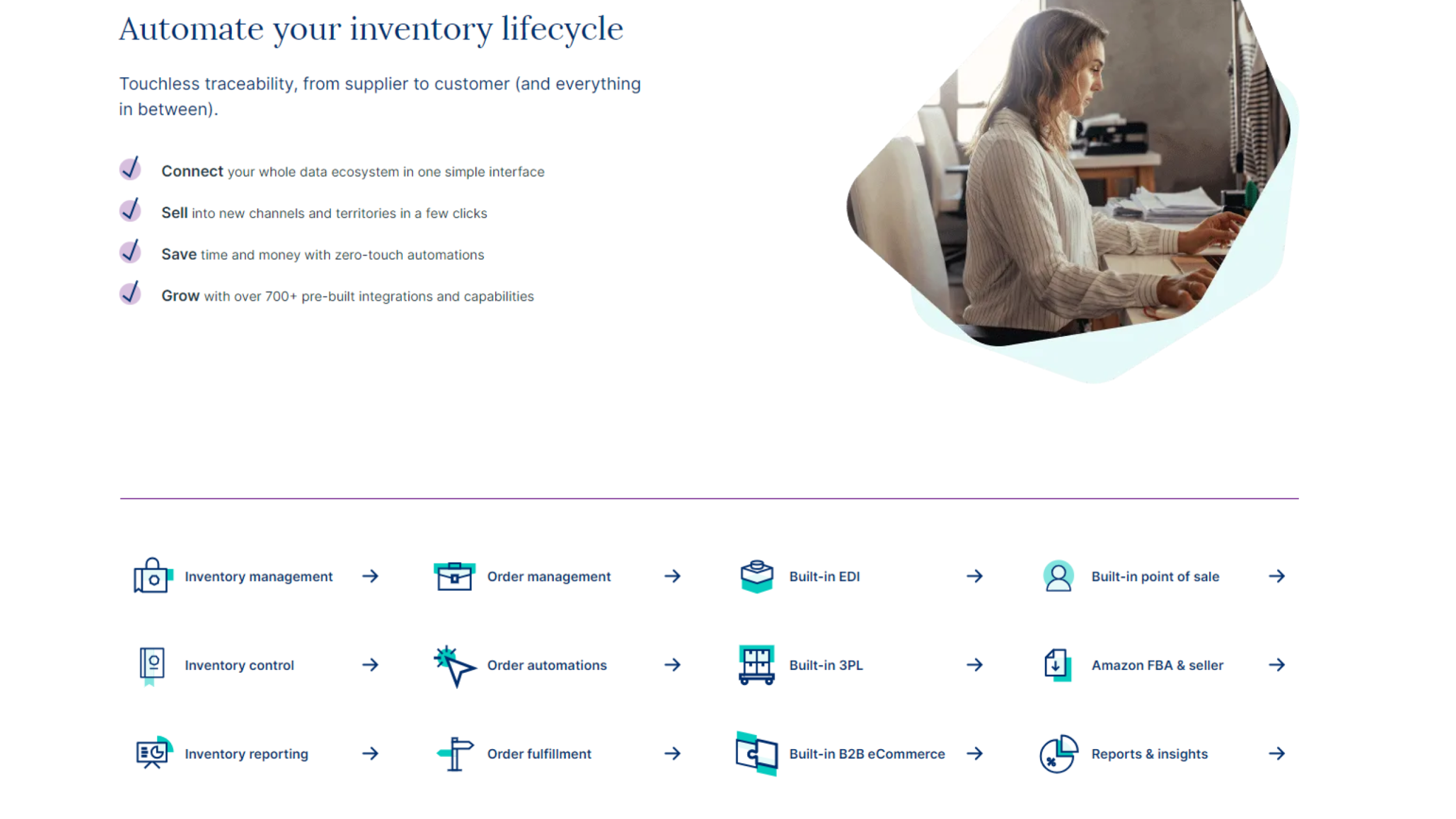
How it Works
Cin7's order management system (OMS) is a revolutionary solution expertly designed to enhance business operational efficiency.
Packed with a myriad of features, this tool redefines multi-channel order management.
One of its defining features includes automated order processing. The system collects orders from various channels, efficiently processes them, and ensures accurate, real-time inventory updates.
What's more, it offers built-in EDI and B2B eCommerce capabilities, expanding operational reach.
Cin7's sophisticated automation reduces manual work and increases precision, giving businesses the perfect tool for efficient growth and complexity management.
Its comprehensive reporting and forecasting capabilities empower businesses to plan better and achieve more. Cin7's OMS is truly a complete solution to order management complexities.
Key Features
- Inventory control across multiple locations
- Order routing optimization
- Provides a built-in B2B portal
- Advanced reporting and forecasting tools
Pros
- Comprehensive inventory and order management
- Supports a large number of integrations
- Robust demand forecasting
Cons
- The interface could be more intuitive
- Setup and customization can be complex
5. Zoho Inventory

How it Works
Zoho Inventory's order management system (OMS) skillfully integrates multichannel selling and inventory control, resulting in a seamless business management experience.
At its core, Zoho Inventory harmonizes selling across various channels, reducing complexities and enabling businesses to reach wider audiences effortlessly.
The beauty of its OMS lies in its meticulous tracking capabilities, managing all stages from packing to delivery.
The real-time inventory tracking prevents overselling, ensuring customers' needs are met promptly.
Further, integrating shipping and invoicing facilities enhances its functionality, providing a uniform platform that aids in optimizing backend processes.
Zoho Inventory's OMS simplifies business management, driving growth and boosting customer satisfaction.
Key Features
- Multichannel inventory tracking
- Batch and serial number tracking
- Integrated shipping and invoicing
- Backorder management
Pros
- User-friendly interface
- Affordable pricing tiers
- Excellent customer service
Cons
- Lacks some advanced features compared to competitors
- Limited support for 3rd party integrations
6. Magento
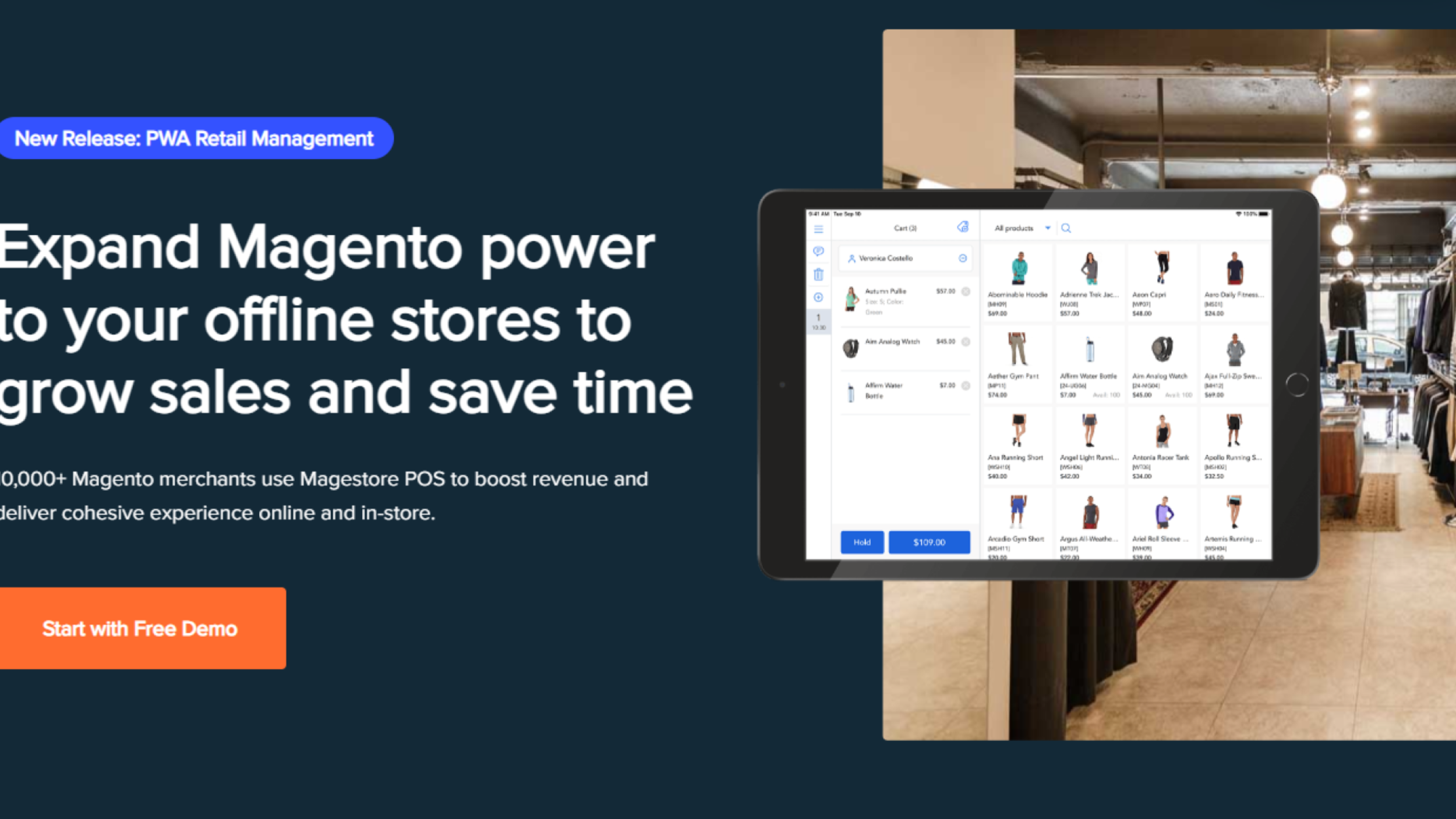
How it Works
If comprehensive and advanced order management is on your radar, then look no further than Magento's Order Management System (OMS) offered by Magestore.
This robust, cloud-based platform excels in integrating multichannel orders into a centralized, user-friendly dashboard.
With this system, you can streamline your pick, pack, and ship processes without any delay since everything resides within the same solution.
It also enables businesses to sell more with features like store pickup and dropship.
Above all, its real-time data synchronization across all channels ensures accurate tracking and management of orders. Magento's OMS is about efficiency and streamlined operations made simple.
Key Features
- Real-time inventory visibility
- Customizable workflows
- Integrated customer service management
- Extensive third-party integrations
Pros
- Highly customizable
- Scalable for large businesses
- Powerful multi-channel support
Cons
- Can be complex for beginners
- Expensive for enterprises
7. Extensiv
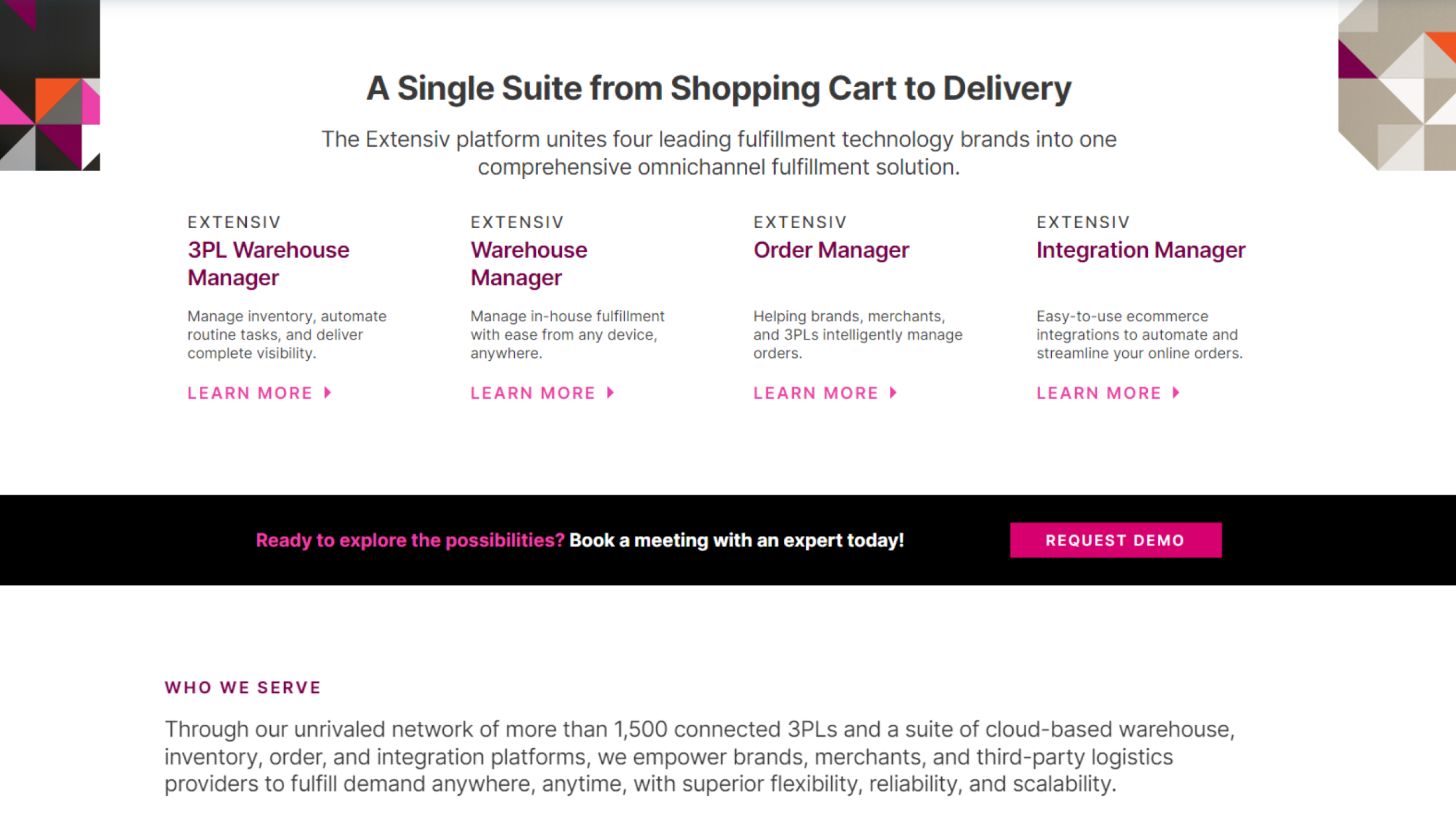
How it Works
Navigating multi-channel commerce is no small feat. Extensiv's Order Management System (OMS) is designed specifically to fine-tune this process.
By integrating all sales channels – online, in-store, and every marketplace you're connected to, Extensiv's OMS creates a seamless flow of information.
This cloud-based platform is entrusted with intelligently managing your orders, helping brands, merchants, and 3PLs in automating routine operations.
It's tailored to offer complete visibility into your eCommerce business. With the power to process millions of orders per week, maintaining inventory accuracy and keeping up with demand becomes a cinch.
Embrace Extensiv's OMS for a swift, unified, omnichannel fulfillment journey.
Key Features
- Unified operations dashboard
- Rules-based order routing
- Advanced inventory analytics
- FBA and 3PL support
Pros
- User-friendly with a unified interface
- Excellent support for high-volume sellers
- Robust analytics
Cons
- Can be overwhelming for small businesses
- Pricing might be high for some users
8. IBM Sterling Order Management
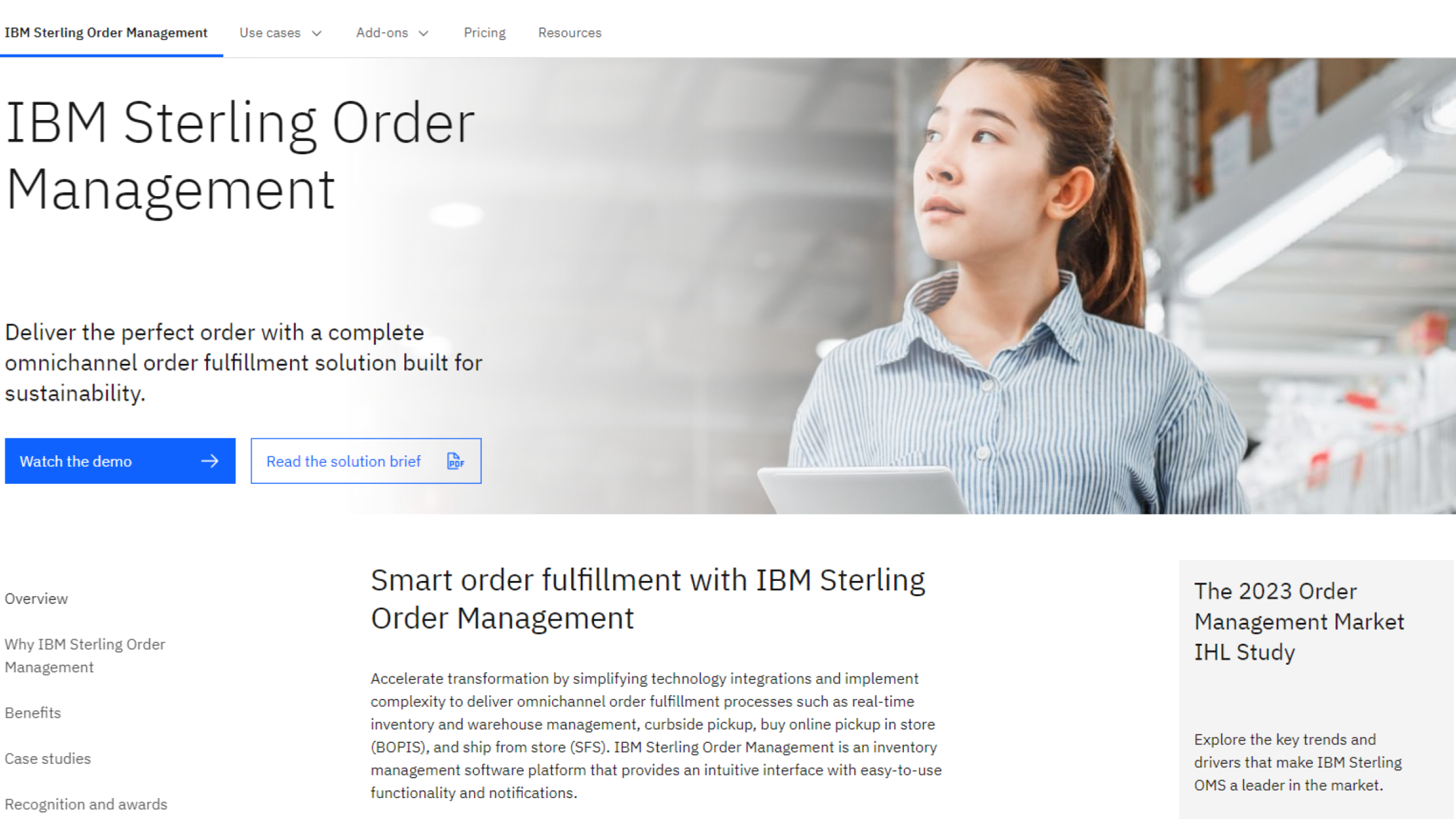
How it Works
IBM Sterling OMS is designed for enterprises handling high volumes of complex orders, providing an integrated platform to automate and streamline the order process.
Key Features
- Order orchestration across channels
- Real-time inventory visibility
- AI-powered insights
- Flexible deployment options
Pros
- Highly scalable for large enterprises
- Powerful integrations with existing systems
- Exceptional customization capabilities
Cons
- The setup process can be complex
- The cost can be prohibitive for smaller businesses
Conclusion
Finding an Order Management System (OMS) that perfectly aligns with your business's unique needs can be a game-changer.
An ideal OMS should not only meet your present requirements but should accommodate future growth as your business expands.
In this blog, we've explored the 8 Best Order Management Systems, from big players and industry leaders to hidden gems offering unique solutions.
By taking your business's scale, budget, and specific requirements into account, you can make an informed decision that ensures seamless operations, reduced costs, and elevated customer satisfaction.
Embracing the right OMS is a crucial step towards the success and longevity of your e-commerce venture!

